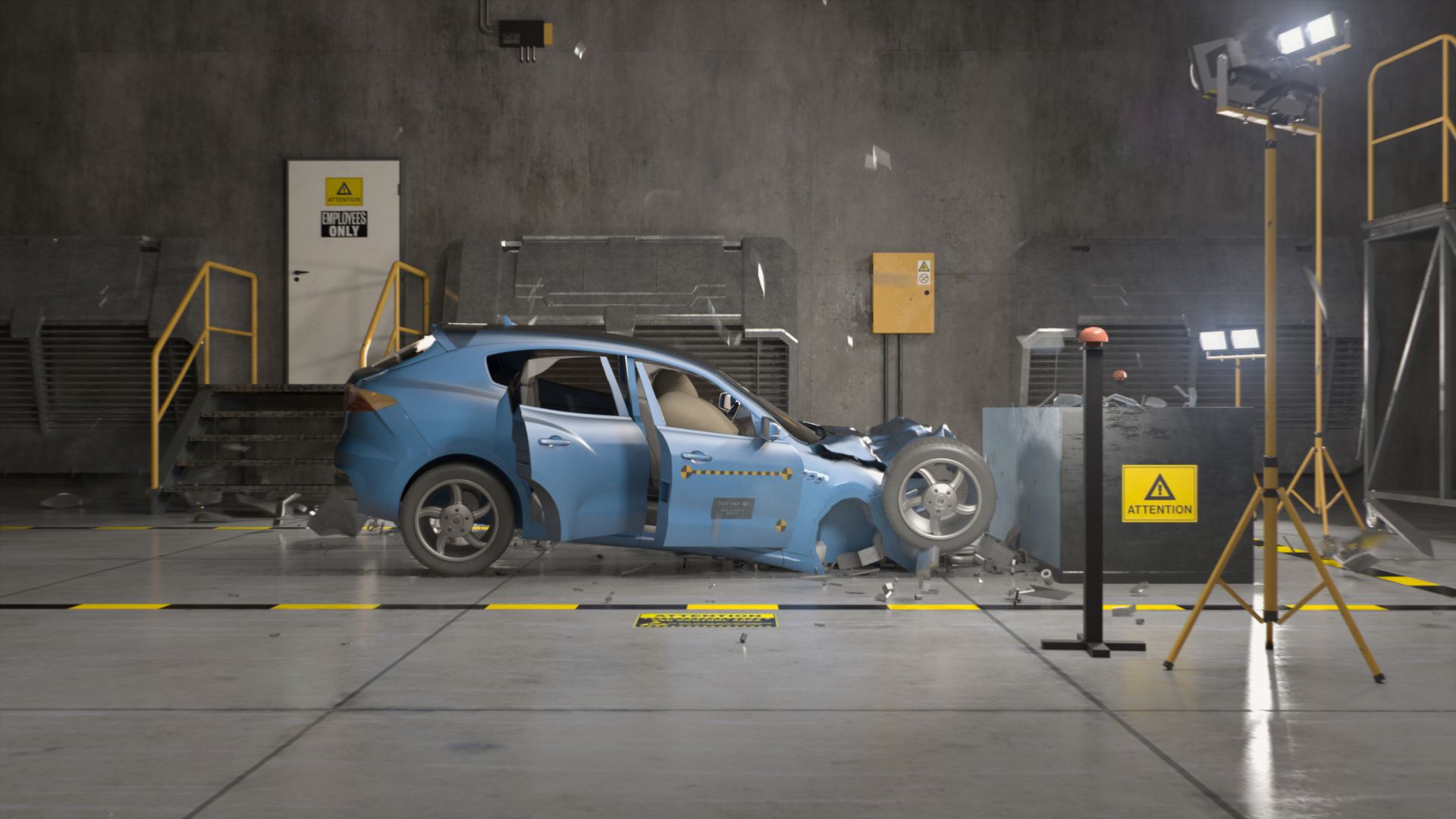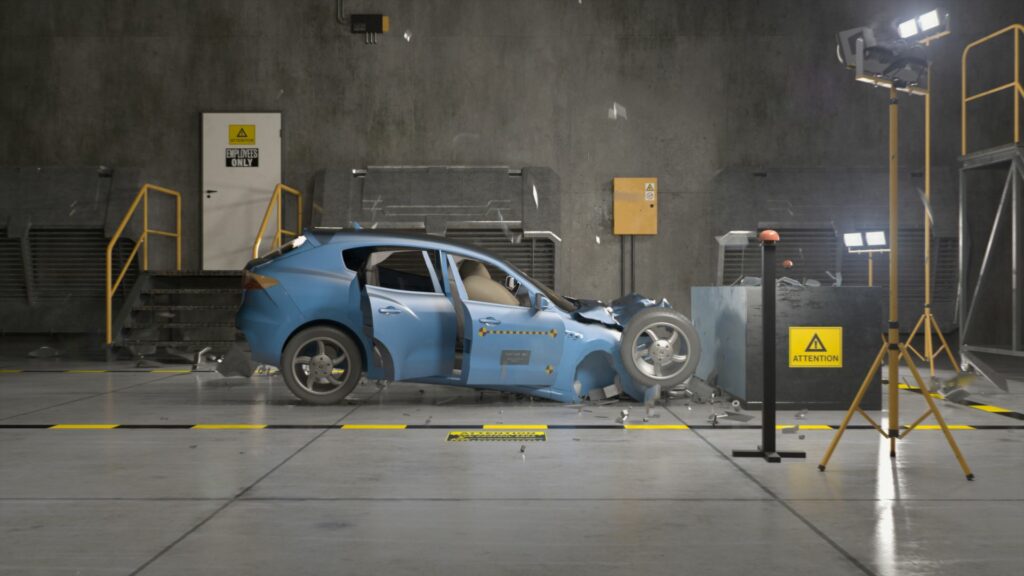Crash Ratings Explained: What They Mean For Your Commercial Property’s Security

Are you concerned about the safety and security of your commercial property in California? Did you know that crash ratings can play a crucial role in evaluating the effectiveness of your property’s security measures? In this blog post, we’ll break down what crash ratings are, how they’re determined, and why they matter for protecting your property against potential vehicular attacks.
By the end of this article, you’ll have a better understanding of how to assess and improve your commercial property’s security using crash ratings.
Key Takeaways
- Crash ratings are standardized safety assessments that evaluate how well vehicles protect occupants during simulated frontal, side, and rollover collisions. They are determined through rigorous testing by independent organizations like NHTSA and IIHS.
- Understanding crash ratings is crucial for commercial property managers to assess the effectiveness of their security measures against vehicular attacks. High crash-rated vehicles and barriers can significantly enhance property security.
- Property managers can easily check crash ratings by consulting the NHTSA’s 5 – Star Safety Ratings program, IIHS’s crash test evaluations, and other reputable sources like Consumer Reports and Edmunds.
Understanding Crash Ratings

Crash ratings provide essential information about a vehicle’s ability to protect occupants in the event of a collision. These ratings are determined through rigorous testing and evaluation by independent organizations, such as the National Highway Traffic Safety Administration (NHTSA) and the Insurance Institute for Highway Safety (IIHS).
What are crash ratings?
Crash ratings are standardized safety assessments that evaluate how well vehicles protect occupants during simulated collisions. These ratings, typically assigned by organizations like the National Highway Traffic Safety Administration (NHTSA) and the Insurance Institute for Highway Safety (IIHS), provide consumers with crucial information about a vehicle’s crashworthiness and overall safety performance.
The NHTSA’s 5-Star Safety Ratings program rigorously tests vehicles in various crash scenarios, including frontal, side, and rollover accidents. Vehicles are then given a rating from one to five stars, with more stars indicating better crash protection.
These ratings help commercial property managers make informed decisions when selecting vehicles for their fleets, ensuring the safety of their employees and assets.
How are they determined?
Crash ratings are determined through a series of rigorous tests conducted by independent organizations, such as the National Highway Traffic Safety Administration (NHTSA) and the Insurance Institute for Highway Safety (IIHS).
These tests simulate real-world crash scenarios, including frontal, side, and rollover crashes, using advanced crash test dummies and sophisticated measurement tools to assess the level of protection provided by the vehicle’s structure and safety features.
The crash test results are then analyzed and evaluated based on established criteria, taking into account factors such as the severity of the impact, the extent of damage to the vehicle, and the potential for injury to the occupants.
The findings are then translated into a standardized rating system, such as NHTSA’s 5-Star Safety Ratings or IIHS’s Good, Acceptable, Marginal, or Poor ratings, allowing consumers and property managers to easily compare the crash performance of different vehicles.
Different types of crash ratings
Crash ratings evaluate a vehicle’s ability to protect occupants during a collision. Understanding the different types of crash ratings can help you make informed decisions about your commercial property’s security measures.
Here are the main types of crash ratings:
Frontal Crash Ratings: These ratings assess how well a vehicle protects occupants in a head-on collision. The tests simulate a crash between two similar vehicles or a vehicle striking a fixed barrier at 35 mph.
Side Crash Ratings: Side crash ratings evaluate a vehicle’s performance in a side-impact collision. The tests simulate a crash where the side of a vehicle is struck by another vehicle or object at 38.5 mph.
Rollover Ratings: These ratings assess a vehicle’s risk of rolling over in a single-vehicle crash. The tests consider factors such as the vehicle’s center of gravity and width to determine the likelihood of a rollover.
Combined Crash Ratings: Some organizations, like the Insurance Institute for Highway Safety (IIHS), provide overall crash ratings that combine the results of multiple tests. These ratings give a comprehensive view of a vehicle’s safety performance.
Pedestrian Crash Ratings: These ratings evaluate a vehicle’s design in terms of reducing injuries to pedestrians in the event of a crash. They assess factors such as the bumper’s impact on a pedestrian’s legs and the hood’s impact on the head.
By familiarizing yourself with these different crash rating types, you can better understand how vehicles are evaluated for safety and make informed choices when selecting security measures for your commercial property.
Next, let’s explore the importance of crash ratings for commercial property security.
Importance of Crash Ratings for Commercial Property Security

Crash ratings are critical for evaluating the security of your commercial property against potential vehicular attacks. By understanding and staying informed about crash ratings, you can make informed decisions to protect your property and its occupants.
Protecting against vehicular attacks
Vehicular attacks pose a serious threat to commercial properties. Crash ratings provide valuable insights into the effectiveness of security measures designed to mitigate these risks.
By understanding how vehicles perform in various crash scenarios, property managers can make informed decisions about the placement and selection of barriers, bollards, and other protective structures.
Crash ratings also help property managers assess the vulnerability of their buildings and parking areas to vehicular intrusions. Armed with this knowledge, they can prioritize investments in security upgrades and develop comprehensive plans to safeguard their tenants, employees, and assets.
Evaluating the effectiveness of security measures
Crash ratings serve as a valuable tool for evaluating the effectiveness of security measures at commercial properties. These ratings provide insight into how well specific barriers, bollards, and other protective structures can withstand the impact of a vehicle collision.
By examining crash test results, property managers can make informed decisions about which security solutions offer the best protection against potential vehicular threats.
Investing in security measures with high crash ratings can significantly enhance the safety and security of a commercial property. Products that have undergone rigorous testing and received favorable ratings demonstrate their ability to absorb and redirect the force of a vehicle impact, minimizing damage to the property and protecting the people inside.
Staying informed and up-to-date
Staying current with the latest crash ratings is crucial for maintaining optimal security at your commercial property. The NHTSA and IIHS regularly update their crash test results, providing valuable insights into vehicle safety performance.
By monitoring these updates, you can assess the effectiveness of your existing security measures and make informed decisions about potential upgrades or modifications.
Subscribing to newsletters and alerts from the NHTSA, IIHS, and other reputable sources ensures that you receive timely information about the latest crash ratings. This proactive approach allows you to stay ahead of potential security risks and adapt your strategies accordingly.
How to Check Crash Ratings
To easily check crash ratings for your commercial property’s security measures, consult reputable sources like the NHTSA and IIHS crash test databases or contact security equipment manufacturers directly.
Read on to learn more about how crash ratings can help you protect your property from potential vehicular threats.
NHTSA crash ratings
The National Highway Traffic Safety Administration (NHTSA) conducts crash tests to evaluate vehicle safety and provides crash ratings to help consumers make informed decisions. NHTSA’s 5-Star Safety Ratings program rates vehicles on a scale of one to five stars based on their performance in frontal, side, and rollover crash tests.
The program also includes an Overall Vehicle Score and recommends advanced safety technologies.
As a commercial or industrial property manager in California, understanding NHTSA crash ratings can help you assess the safety of vehicles used on your property. By staying informed about these ratings, you can make better decisions when purchasing or leasing vehicles for your business, ensuring the safety of your employees and visitors.
IIHS crash ratings
In addition to NHTSA crash ratings, the Insurance Institute for Highway Safety (IIHS) also provides valuable insight into vehicle safety through their crash test evaluations. IIHS crash ratings assess both crashworthiness and crash avoidance/mitigation capabilities of vehicles, offering a comprehensive understanding of their safety performance.
By visiting the IIHS website, commercial property managers can easily search for safety ratings based on a vehicle’s make, model, and year, enabling them to make informed decisions when selecting vehicles for their fleet or assessing the safety of vehicles accessing their properties.
IIHS recognizes the safest vehicles with their prestigious Top Safety Pick award, providing a clear indication of which models excel in protecting occupants and preventing accidents.
The institute also offers a helpful guide for comparing the safety features and performance of various car, minivan, pickup, and SUV models, allowing property managers to prioritize safety when making vehicle choices.
Other resources for checking ratings
Aside from the NHTSA and IIHS, commercial property managers can explore other resources to check crash ratings. Websites like Consumer Reports and Edmunds provide detailed vehicle safety information, including crash test results and safety features.
These sites offer comprehensive reviews and comparisons, helping managers make informed decisions about their property’s security measures.
Property managers can also consult with security experts and professionals who specialize in crash ratings and vehicular safety. These experts can provide valuable insights and recommendations tailored to the specific needs of a commercial property.
They can assess the property’s vulnerabilities and suggest appropriate security solutions based on the latest crash rating data and industry standards. Consulting with experts ensures that managers have access to the most up-to-date information and guidance when it comes to protecting their properties from potential vehicular threats.
Conclusion
Crash ratings provide valuable insights into vehicle safety for commercial properties. By understanding how these ratings are determined and their significance, property managers can make informed decisions to enhance security measures.
Regularly checking crash ratings from reputable sources like NHTSA and IIHS ensures you stay up-to-date with the latest safety standards. Incorporating vehicles with high crash ratings into your property’s security plan can significantly reduce the risk of vehicular attacks and protect your assets.
Don’t wait until it’s too late—take proactive steps to prioritize safety and give your tenants peace of mind. Invest in the security of your commercial property today and reap the benefits of a safer tomorrow.
FAQs
1. What are crash ratings?
Crash ratings are standardized measures that indicate a vehicle barrier’s ability to stop a specific type of vehicle traveling at a certain speed.
2. How do crash ratings help improve commercial property security?
Crash ratings help property owners choose the appropriate vehicle barriers to protect their buildings, assets, and people from potential vehicle-based threats.
3. What factors determine a barrier’s crash rating?
A barrier’s crash rating is determined by the type and weight of the vehicle it can stop, as well as the speed at which the vehicle is traveling.
4. Are crash-rated barriers required for all commercial properties?
No, crash-rated barriers are not required for all commercial properties, but they are recommended for high-risk locations or those with valuable assets.
5. How can I determine the appropriate crash rating for my property?
To determine the appropriate crash rating for your property, consider factors such as the location, type of assets, and potential threats, and consult with a security professional.